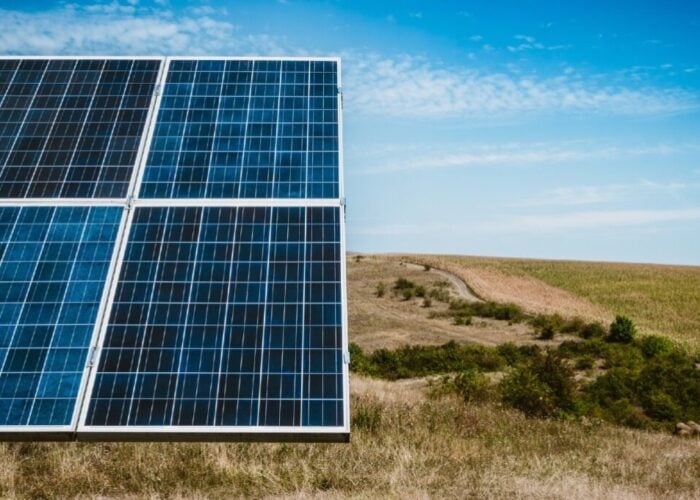
Whilst the US is destined for a tectonic shift in its energy landscape under either prospective president, new analysis from Lux Research suggests that Trump’s policies would leave emissions 16% higher after two terms than Clinton’s.
The Republican nominee has been vocal about his designs to dismantle US commitment to the Paris Agreement on climate change, as well as his affinity to the coal industry. Analysts at Lux Research have forecast that a Trump presidency would see US emissions on the rise, while Clinton would keep them on their current downward trajectory.
Try Premium for just $1
- Full premium access for the first month at only $1
- Converts to an annual rate after 30 days unless cancelled
- Cancel anytime during the trial period
Premium Benefits
- Expert industry analysis and interviews
- Digital access to PV Tech Power journal
- Exclusive event discounts
Or get the full Premium subscription right away
Or continue reading this article for free
Overall, estimations peg emissions at an increase of 3.4 billion tonnes over the next eight years, if Trump takes pole position at the White House. With his history of believing climate change is a hoax created by the Chinese and opposing renewables integration despite the fact it is the fastest growing source of job creation in the country, the US energy sector outlook is bleaker than just a significant increase in emissions.
Climate change?
Energy policy has remained relatively dormant during media coverage of the election, but a small insight into the respective candidates’ plans for the sector was made known in a recent debate with their energy advisors. Trump’s adviser Kevin Cramer questioned whether climate change was even an issue, and vocalised disdain that the US was shouldering global responsibility for global climate change efforts:
“The Paris Accord allows China – imagine this – China, who is responsible for 30% of the global emissions this year in the United States […] allows them to continue growing their emissions until 2030, while the US continues to reduce it. In other words, again, another unilateral disarmament of our economy to solve global problem.
“Now why is it always on the United States to take care of every global problem? If in fact there is one?”
Conversely, Clinton has pledged to deploy half a billion more solar panels and has initiated plans to use natural gas as a ‘bridge’ in the transition from fossil fuels to renewables. Emissions and climate charge, in her opinion, are very real concerns for the US energy sector, with energy adviser Trevor Houser confirming Clinton’s commitment to the Paris Agreement:
“We need to do two things; we need to reduce emissions here in the US and in collaboration with countries around the world. And that's what the Paris agreement puts us on track to do […] But then we also need to invest in resilience to protect our communities from the climate change that we can't avoid”.
Clean Power Plan
Clinton intends to continue current policy under Barack Obama and work towards reducing emissions by up to 30% by 2025, while Trump plans to cancel the Clean Power Plan altogether.
“The Clean Power Plan is the very definition of arbitrary and capricious. They have chosen arbitrary standards that are unbeatable with today's technology, designed to kill an industry that would be the very industry that would invest in the solution that can happen even with co2 emissions… But it's designed to do one thing: put all the coal miners out of business,” said Cramer.
Regardless, Lux Research found that coal will still come in second to natural gas; as Trump’s plans to lift regulations on fracking will keep prices on gas down and actually hinder progress in the coal industry. Evidently, a Clinton Administration staying on course with Obama’s Clean Power Plan would also continue to downplay coal.
Renewables
In terms of greater renewable traction, Clinton’s ambitious target of deploying enough solar capacity to power every home in the US would promote a shift from utility-scale to commercial and residential-scale generation, according to Lux. This in turn would provide a boost to the emerging energy storage industry and distributed energy resource management systems (DERMS) to manage the variability of increased uptake of renewables on national grids.
There is the opinion that the upward trajectory of renewables in the US is too great even to be dismantled by Trump, despite the candidate being not too big a fan of solar energy. In any event, Lux Research forecast the oil and gas industry will continue to thrive under either Administration.
However, the outcome of the next president will have a significant impact on the future of US emissions.
“As independent analysts, we don't endorse candidates, but the data and analysis clearly show that energy policy and the resulting emissions will go in very different directions under Clinton and Trump,” said Yuan-Sheng Yu, Lux Research analyst. “Climate change hasn't been front and centre in media coverage of this election but voters should be aware of the implications of their choice on this important issue,” he added.






